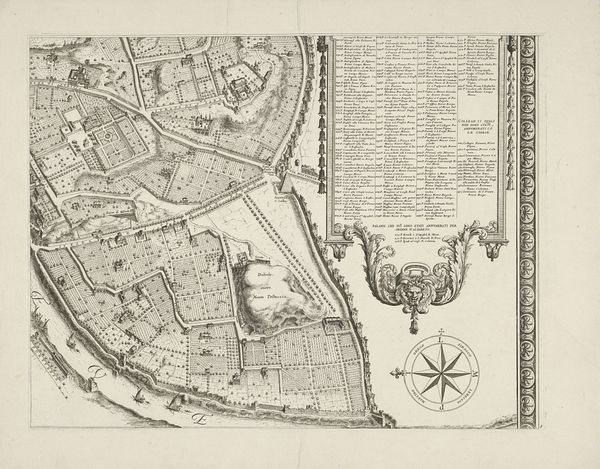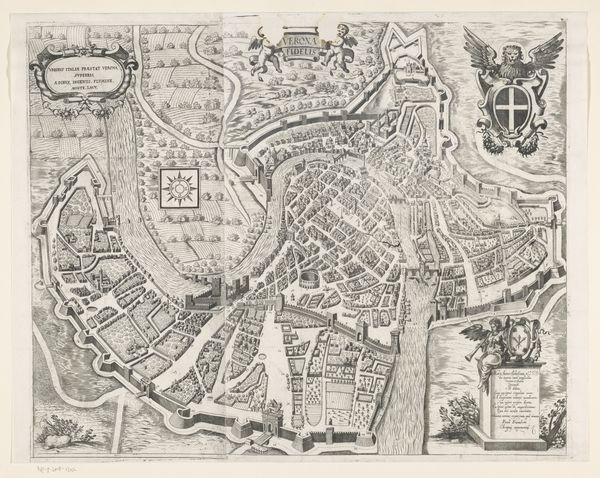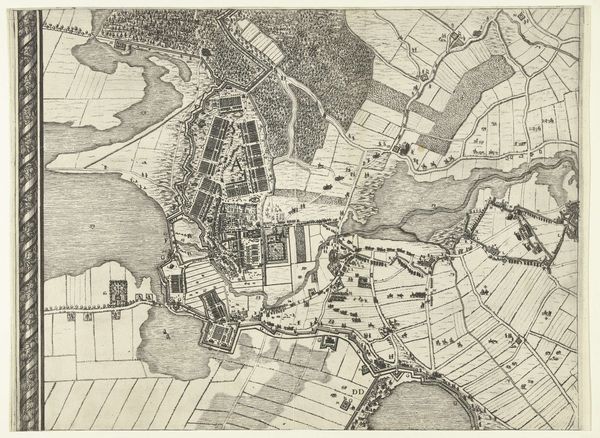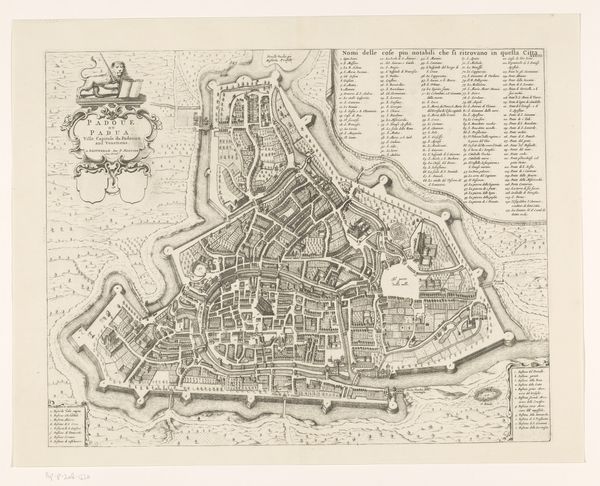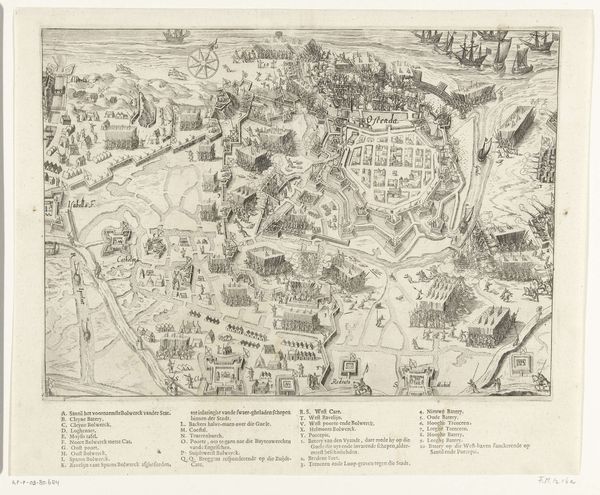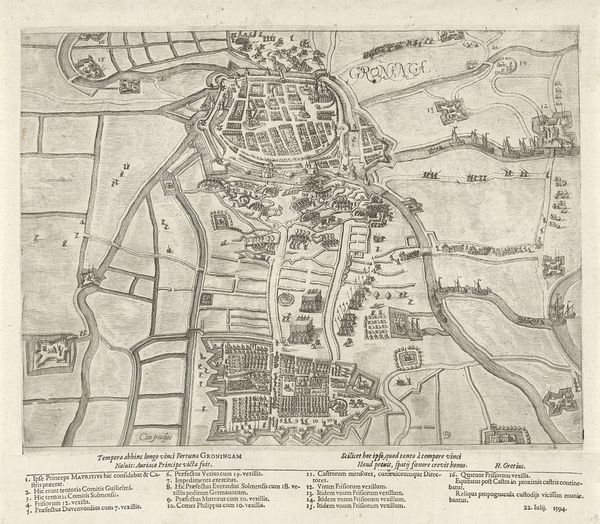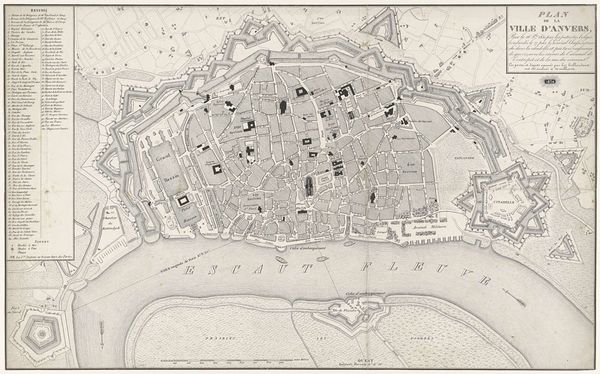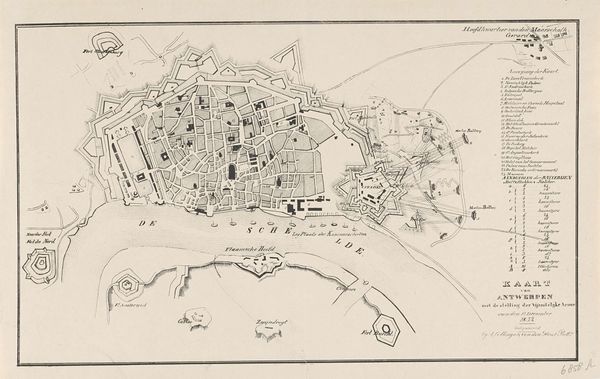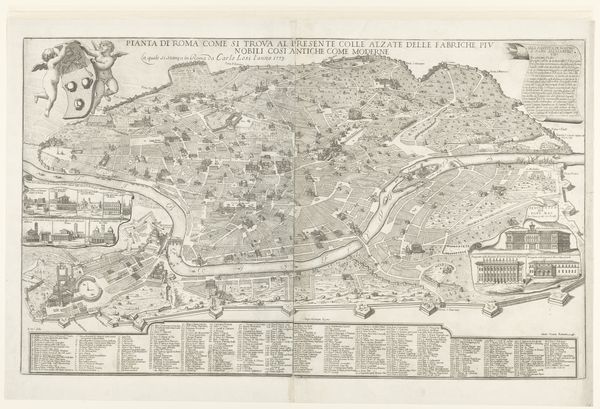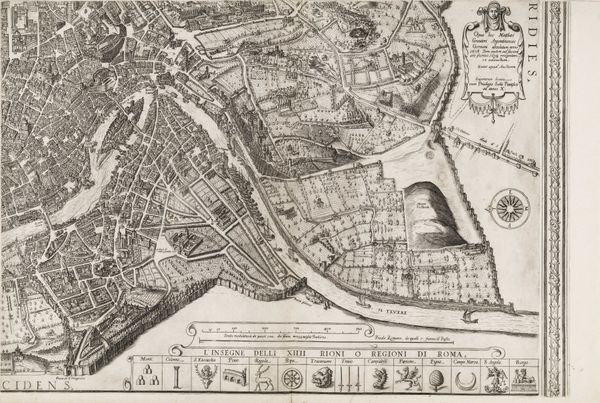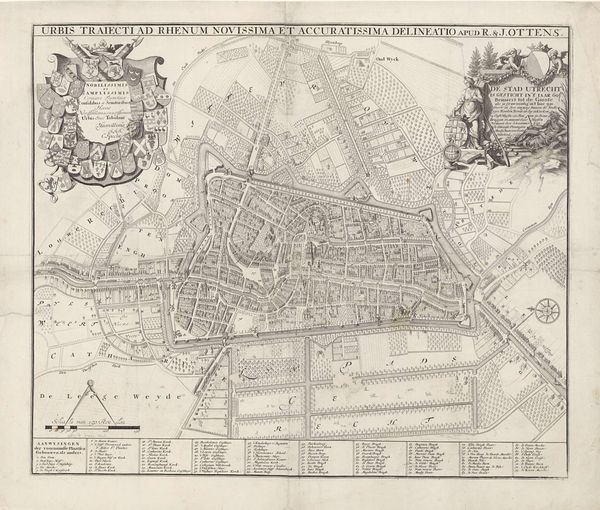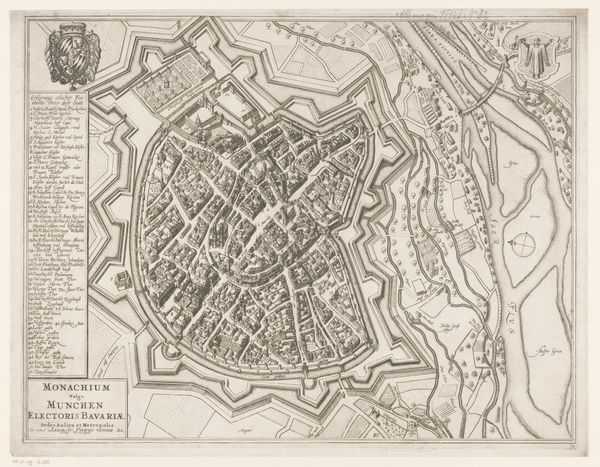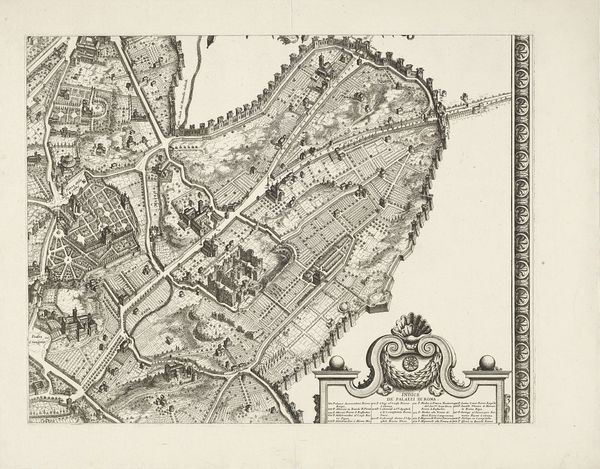
print, engraving
#
baroque
# print
#
geometric
#
cityscape
#
history-painting
#
engraving
Dimensions: height 390 mm, width 510 mm
Copyright: Rijks Museum: Open Domain
Curator: Looking at Giovanni Battista Falda's "Plattegrond van de stad Rome" from 1676, a detailed print now housed in the Rijksmuseum, I'm immediately struck by how the intricacy almost gives the city a life of its own. Editor: It is quite remarkable in detail. I immediately notice how rigidly hierarchical urban space was and is represented. Every building seems to speak to a clear power dynamic. How would you unpack Falda’s own socio-political positioning, though, while creating it? Curator: Absolutely, let's dig into that. Prints like these weren’t just about documentation, they were commodities. Falda worked during a boom in printmaking, using etching and engraving to capture the city. So while providing a visual document, he’s simultaneously contributing to Rome's self-image, and making a product to circulate that image widely. Editor: The selection and framing, too—cityscapes and maps of this era participated in consolidating certain political narratives. This map certainly offers us an insight into how Baroque Rome constructed its image of authority. It emphasizes order, precision, and control, reinforcing the ideals of governance at the time. I can only imagine the politics enmeshed in its crafting. Curator: Agreed, that tension makes the print compelling. His tools shaped his art—the linear precision possible through engraving allows the creation of incredibly detailed, replicable city plans. However, the physical act of engraving is incredibly laborious; imagine spending days just working on this one print! Also the way it circulated, who got to access it, speaks to its purpose. Editor: Precisely. And how this kind of visual project, in turn, shaped public perception. Its detailed structure isn’t simply mimetic; it helped construct a worldview where certain sites were valorized. Looking at these historical materials can shed a light on understanding power structures. Curator: What it means is that prints like these become not just visual artifacts but testaments to economic activity, urban design, and the very business of image making in Baroque Rome. It merges the line between craft and fine art. Editor: Ultimately, this plattegrond becomes more than just a guide; it serves as a historical record, offering critical insight into society at that moment in time. Curator: For me, the conversation is about labor and materiality. This changes the dialogue about what an artwork is, and how it's perceived within culture. Editor: And seeing how deeply social and political history gets layered within it!
Comments
No comments
Be the first to comment and join the conversation on the ultimate creative platform.
